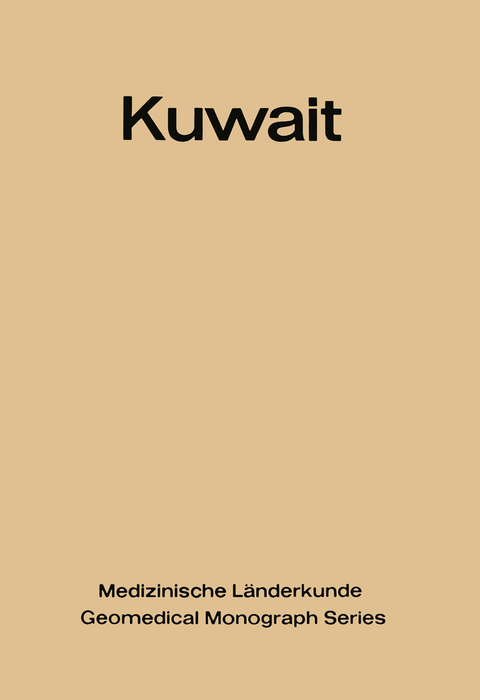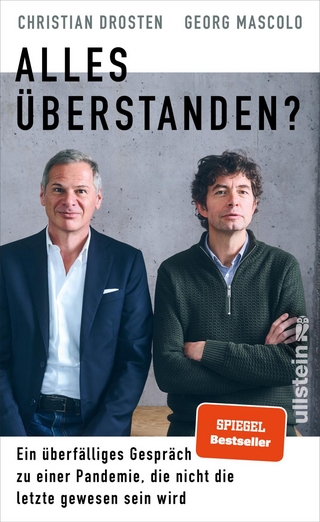
Kuwait
Springer Berlin (Verlag)
978-3-642-65174-8 (ISBN)
The relation of Kuwait's development to Europe and Far East.- Discovery of oil reserves outside the Middle East.- Arab nationalism.- Great Britain's responsibility.- Inapplicability of laws and generalizations of developed world.- General lessons of value to others.- Kuwait a testing ground.- 1. Urbanization and Population Growth in the Middle East.- 1. Definitions.- General statements on nature and causes of urbanization.- Historical connections.- Development of civilisations.- Technical innovations.- Sources of labour.- Population increase, food supplies, general educational advances.- 2. Middle East Urbanization: Extent andSpecial Characteristics.- United Nations's statistics.- 3. Levels of Urbanization in the Middle East.- 4. Elements Peculiar to the Urbanization of the Middle East.- Social and political urbanization.- Defence role.- Religion.- Oil.- Investment capital.- Israel.- Foreign aid.- 5. Conclusion.- II. The Urbanization of Kuwait. Prosperity alternating with hardship.- 1. The Environment. Physical geography.- a) Summer.- b) Winter.- c) Daily weather.- 2. Water Resources.- a) Occurrence.- b) Development.- 3. Power.- 4. Agriculture.- a) Farmers.- b) Nomads.- 5. Fishing.- a) Pearling.- b) Fishing.- 6. Mineral Resources Industries.- Industries.- Distribution of labour force.- Restriction of economic opportunity.- III. The Early History of Kuwait.- IV. The Economic Development of Kuwait.- V. Population Growth in Kuwait. Twelve hundred per cent increase in 60 years.- 1. Introduction.- Preponderance of non-Kuwaitis.- Nationality law.- Duality of national life.- 2. Population Expansion by Immigration.- a) War-time immigration.- b) Post-war immigration.- c) Factors involved in immigration.- d) The Alien population 1957-1965.- aa) Sex ratios.- bb) Agestructure.- e) Permanency of migration to Kuwait.- f) Arrivals after 1965.- 3. Population Expansion by Natural Increase. Introduction.- a) Vital statistics in Kuwait.- b) Natality, mortality and the populationcycle.- c) Health facilities in Kuwait.- aa) Growth.- bb) Effect.- d) Age structure of the Kuwait population.- aa) The Kuwaitis.- bb) The Non-Kuwaitis.- e) Natality and fertility.- aa) Kuwaitis.- bb) Non-Kuwaitis.- f) Mortality.- aa) Kuwaitis.- bb) Non - Kuwaitis.- 4. Conclusions - Natural Increase.- a) Kuwaitis.- b) Non-Kuwaitis.- VI. The Ecology of Daily Life.- A. The Rural Community.- Agriculture.- Water resources.- Pastoral nomadism.- Cultural legacy of the Badu.- Religion, fasts and feasts.- Emphasis on kinship.- Hospitality, manners and modes.- B. The Urban Community.- Post-War Expansion of the Built up Area.- 1. Kuwait City Before Oil Discoveries.- a) Extent.- b) Internal characteristics and differentiation.- 2. Kuwait City after the Discovery of Oil.- Rising revenues and immigration.- 3. The Government Land Purchase Scheme.- 4. Planning and Urban Expansion.- a) The 1952 plan.- b) Physical expansion of the city structure.- c) Subsequent plans.- 5. The Contemporary City.- a) The Old City.- b) The Kuwait neighbourhoods.- c) Hawalli and Salimiya.- d) Abruq Khaitan and Farwaniya.- e) Ahmadi and Fahahil.- C. Population Distribution and Density within the Urban Areas.- 1. Changing Patterns of Population Distribution.- a) Before the first census.- b) Effects of oil discoveries.- c) Population distribution in 1957.- d) Population distribution in 1965.- D. Population Composition and Social Areas within Kuwait.- 1. "Western" and "non-Western" Cities.- 2. Land Use and Urban Ecology.- a) Methods.- b) Selection of variables.- 3. The Distribution of IndividualVariables.- a) Kuwaitis and non-Kuwaitis.- b) Illiterates.- c) Employees in construction.- d) Professional and temnical workers.- e) Administrative workers.- 4. The Analysis of Groups of Variables.- a) Method.- b) Variables.- 5. The Factors: Their Composition and Distribution.- a) Factor composition.- b) The distribution of factors throughout Kuwait.- 6. The Geographic Distribution of Individual Factors.- 7. Combinations of all 3 Factors.- a) Group 1.- b) Group 2.- c) Group 3.- d) Group 4.- 8. Factor Analysis and the Structure of Kuwait City.- 9. Social Areas in Kuwait City.- a) The Old City and other areas of immigrant invasion.- b) Areas under construction with low-status immigrants.- c) Strongly Kuwaiti areas.- 10. International Parallels.- 11. Conclusion.- VII. Health and Disease.- 1. Introduction.- a) Pseudo-urbanization.- b) The health of the Badu.- c) Effects of urbanization.- d) Integration of planning for social and environmental manges.- e) The importance of integrating disciplines beyond fringe of medicine.- f) Adaptation of the individual to meet the new stresses.- g) Alterations in disease patterns.- h) Definition of Medical Geography.- 2. Specific Problems of Kuwait.- a) Training for responsibility.- b) Infectious disease.- c) Infant gastro-enteritis.- d) Kuwait as an epidemiological listening post.- e) Genetic disease.- f) Environmental influences.- g) Blindness.- VIII. Preventive Medicine in Kuwait.- 1. Preventive Medical Service.- a) Establishment: urban planning: water supplies; killing of animals.- b) Structure of Ministry of Public Health.- c) Growth of services.- d) Communications.- e) Health education.- f) Inspection of buildings and regulations.- g) Private industrially financed medical services of the oil companies.- 2. Infectious Diseases.- a)Comparison with other geographic areas.- b) Leprosy.- c) Hepatitis.- d) Rabies.- e) Malaria.- f) Poliomyelitis.- g) Bacillary Dysentery.- h) Amoebic Dysentery.- i) Worms.- j) Schistosomiasis.- 3. School Medical Services.- a) School population.- b) Development of service.- c) Epidemiology.- d) Nutrition.- IX. Treatment Services.- 1. Traditional Medicine.- a) Badu practices.- b) Branding.- c) The history of Arabian medicine.- d) The Nestorians and Persians.- 2. Modern Treatment Services.- a) European influence in the Gulf.- b) The Political Agency and the American Mission.- c) The Government and oil companies.- d) Professional medical associations.- e) Medical facilities and services.- f) Laboratory services.- g) Tuberculosis diagnostic laboratory.- h) Blood transfusion services.- i) Relative paucity of published clinical eports until 1968.- X. Trauma, Temperance, Tuberculosis and Toxoplasmosis.- 1. Trauma.- a) War and wounds.- The last battle of Jahra 1920.- Dr. Mylrea's account.- b) Deaths and accidents on the roads.- c) Statistics.- Industrial and domestic accidents.- 2. Temperance.- Religious law and alcohol.- Different countries' experience.- Prohibition in Kuwait.- The position for non-Moslems.- Illegal distilling.- Smuggling.- Effects of alcohol intoxication.- 3. Tuberculosis.- Experience of the Badu.- Infection in older people.- Population sampling.- Treatment facilities.- Visit of WHO in 1961.- B.C.G. vaccination.- Conversion rates.- Non -pulmonary tuberculosis.- 4. Toxoplasmosis.- Epidemiology elsewhere.- The study in Kuwait.- Clinical findings.- Significance of endemicity in local sheep and goats.- XI. Psychiatric Illness.- The pattern in Kuwait.- Traditional practices.- Hospital facilities.- Incidence of disease.- Use of drugs.- Sexual deviation andhomosexuality.- Emancipation of women and psychoneurotic effects.- The effects of industrialisation.- XII. The Haemoglobinopathies.- 1. First Recognition in Kuwait.- World distribution.- Source of Kuwait's population; migrations.- 2. Sickle-Cell Anaemia.- 3. Thalassaemia: definition.- Clinical and laboratory studies: treatment.- 4. Glucose-6-Phosphate Dehydrogenase Deficiency of the Red Blood Cells.- XIII. Heat Illness and Desert Survival.- Comparative physiology in man and animals.- The Badu: conservation of energy, comfort and discipline.- Heat gain and loss.- Investigations in Kuwait, and elsewhere on the Badu.- Types of heat illness.- Heat-illness among oil tanker crews.- Heat-stroke in Kuwait.- Steps taken to combat effects of heat stroke.- Factors affecting heat control.- XIV. Occupational Health.- 1. Epidemiology.- Development of government and oil company services.- Establishment of standards.- Liaison with I.L.O. and other countries.- Education of doctors and other health workers.- 2. Petroleum and its Hazards to Health in Kuwait.- The history of petroleum and its development.- Use and destination of Kuwait products.- Use of natural gas.- Medical uses of petroleum.- Hazards of petroleum manufacturing to workers and public; explosive and toxic.- Additive effects of sun and petroleum on skin.- Possible long-term carcinogenic effects on various body organs.- 3. Secondary Industries.- Development and pattern.- Asbestos.- Training for industry.- Health education.- XV. Air Pollution.- The desert air, sand, dusts, spores and fungi.- Cigarette.- Urban planning.- Industrial air pollution.- Petroleum products, combustion.- Legislation.- WHO advice.- Investigations of pollen production, Prosopis spicigera.- Air-conditioning of houses.- Atmospheric ionisation.- XVI.Conclusion.- Comparision of urbanization today with nineteenth century Europe.- Kuwait's anomalous development in Eastern Arabia.- The intrusion of "foreigners" and internal schisms.- Disease as a measure of the problem.- The danger of dualism.- The lessons of enlightened colonialism.- Kuwait's limited man-power pool.- Diversification of trade and industry.- Oil as a political weapon.- Need for an understanding of ecology by Kuwait's children.- The problems of citizenship.- The importance of a "cross-cultural" outlook.- Kuwait as a study of enlightened development.- References.- Illustrations.
| Erscheint lt. Verlag | 15.11.2011 |
|---|---|
| Reihe/Serie | Medizinische Länderkunde Geomedical Monograph Series |
| Zusatzinfo | XIII, 126 p. |
| Verlagsort | Berlin |
| Sprache | englisch |
| Maße | 210 x 297 mm |
| Gewicht | 391 g |
| Themenwelt | Studium ► Querschnittsbereiche ► Epidemiologie / Med. Biometrie |
| Naturwissenschaften ► Biologie ► Ökologie / Naturschutz | |
| Naturwissenschaften ► Geowissenschaften ► Geografie / Kartografie | |
| Schlagworte | Ecology • growth • Health • Organizations • Planning |
| ISBN-10 | 3-642-65174-7 / 3642651747 |
| ISBN-13 | 978-3-642-65174-8 / 9783642651748 |
| Zustand | Neuware |
| Haben Sie eine Frage zum Produkt? |
aus dem Bereich


